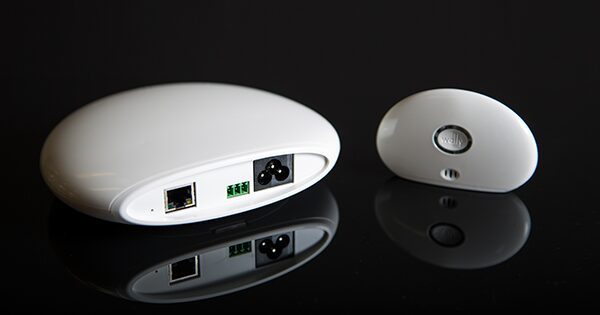Why Consumer Electronics Designers Are Shaping the Future of Innovation

Consumer electronics have become an inseparable part of our daily lives. From smartphones and wearables to smart home devices and entertainment systems, the demand for innovative and functional electronic products is rapidly growing. Behind every product that revolutionizes how we live, work, or communicate, there is a dedicated team of consumer electronics designers who conceptualize, design, and engineer solutions to meet consumer needs.
Who Are Consumer Electronics Designers?
Consumer electronics designers are professionals who specialize in creating electronic products intended for everyday use. Their work extends beyond traditional engineering; they combine design thinking, functionality, user experience, and technology integration. Unlike industrial engineers who primarily focus on mechanics or aesthetics, these designers work on products that integrate electronic hardware, software, and design to meet consumer expectations.
Their role involves:
- Product Conceptualization: Understanding market needs and creating product ideas.
- Prototyping: Building models to test design feasibility.
- User-Centered Design: Ensuring products are easy to use and intuitive.
- Integration of Technology: Aligning hardware, software, and connectivity (such as IoT).
- Sustainability Considerations: Designing eco-friendly and energy-efficient products.
Importance of Consumer Electronics Designers in Today’s World
- Driving Innovation
Every breakthrough product—from wireless earbuds to AI-powered home assistants—begins with innovative design. Consumer electronics designers are at the forefront of imagining products that address future challenges and lifestyles. - Improving User Experience
Modern consumers expect products that are not just functional but also intuitive and stylish. Designers ensure that technology aligns with human needs rather than forcing users to adapt to technology. - Boosting Market Competitiveness
In highly competitive markets, design can make or break a product. Companies invest heavily in design because a well-designed product attracts more consumers, creates brand loyalty, and often justifies premium pricing. - Bridging Hardware and Software
Designers ensure seamless integration between physical components and digital interfaces, creating a holistic experience for users.
Skills and Expertise of Successful Consumer Electronics Designers
To succeed in this industry, professionals need a mix of technical, creative, and business-oriented skills.
- Electronics Knowledge: Understanding of circuit design, microcontrollers, and embedded systems.
- UI/UX Expertise: Designing interfaces that enhance usability.
- Industrial Design: Balancing aesthetics, ergonomics, and durability.
- Prototyping and Testing: Using 3D modeling and CAD software to bring ideas to life.
- Sustainability Awareness: Designing with eco-friendly materials and energy efficiency in mind.
- Market Insight: Knowing what consumers want and anticipating future trends.
Emerging Trends in Consumer Electronics Design
- Smart and Connected Devices
IoT-enabled devices are dominating the market. Designers must integrate sensors, connectivity, and AI to create intelligent products. - Minimalist and Sleek Aesthetics
Consumers prefer slim, lightweight, and visually appealing devices. Designers focus on compactness without compromising performance. - Sustainability and Green Design
Eco-conscious consumers push brands to adopt recyclable materials and energy-efficient designs. - Wearable Technology
From health monitors to AR/VR headsets, wearables are becoming mainstream, requiring expertise in ergonomics and comfort.
Challenges Faced by Consumer Electronics Designers
- Balancing Cost and Innovation: Advanced features can increase production costs, so designers must optimize for affordability.
- Rapid Technological Changes: Keeping up with new technologies is crucial but challenging.
- Sustainability Pressures: Meeting environmental standards while maintaining product appeal is complex.
- Consumer Expectations: Customers demand flawless performance, creating pressure on design teams.
The Future of Consumer Electronics Designers
As technology continues to evolve, the role of consumer electronics designers will become even more critical. The future may include:
- Fully immersive AR/VR devices.
- Self-charging or solar-powered gadgets.
- Personalized consumer electronics tailored to individual lifestyles.
- Smarter, AI-integrated homes where every device communicates seamlessly.
In the coming years, we can expect these professionals to play an even greater role in shaping sustainable and connected living.
FAQs About Consumer Electronics Designers
Q1: What is the role of consumer electronics designers in product development?
A: They conceptualize, design, prototype, and refine electronic products while ensuring usability, aesthetics, and functionality align with consumer needs.
Q2: How do consumer electronics designers differ from industrial designers?
A: Industrial designers focus mainly on product form, ergonomics, and appearance, while consumer electronics designers specialize in integrating electronics, software, and usability into consumer products.
Q3: Why are consumer electronics designers important for innovation?
A: They drive innovation by creating products that solve problems, enhance convenience, and anticipate future consumer demands.
Q4: What industries hire consumer electronics designers?
A: They work across industries such as smartphones, wearables, entertainment systems, home appliances, IoT devices, and healthcare technology.
Q5: What skills should aspiring consumer electronics designers develop?
A: Key skills include electronics design, CAD modeling, UI/UX design, prototyping, and knowledge of sustainability trends.
Q6: How does sustainability impact consumer electronics design?
A: Designers are increasingly required to use recyclable materials, energy-efficient systems, and eco-friendly packaging to reduce environmental impact.
Conclusion
Consumer electronics designers are the unsung heroes behind the gadgets we use daily. Their creativity, technical skills, and forward-thinking approach shape how technology integrates into our lives. As industries continue to evolve with IoT, AI, and sustainability goals, these professionals will remain at the forefront of innovation.




